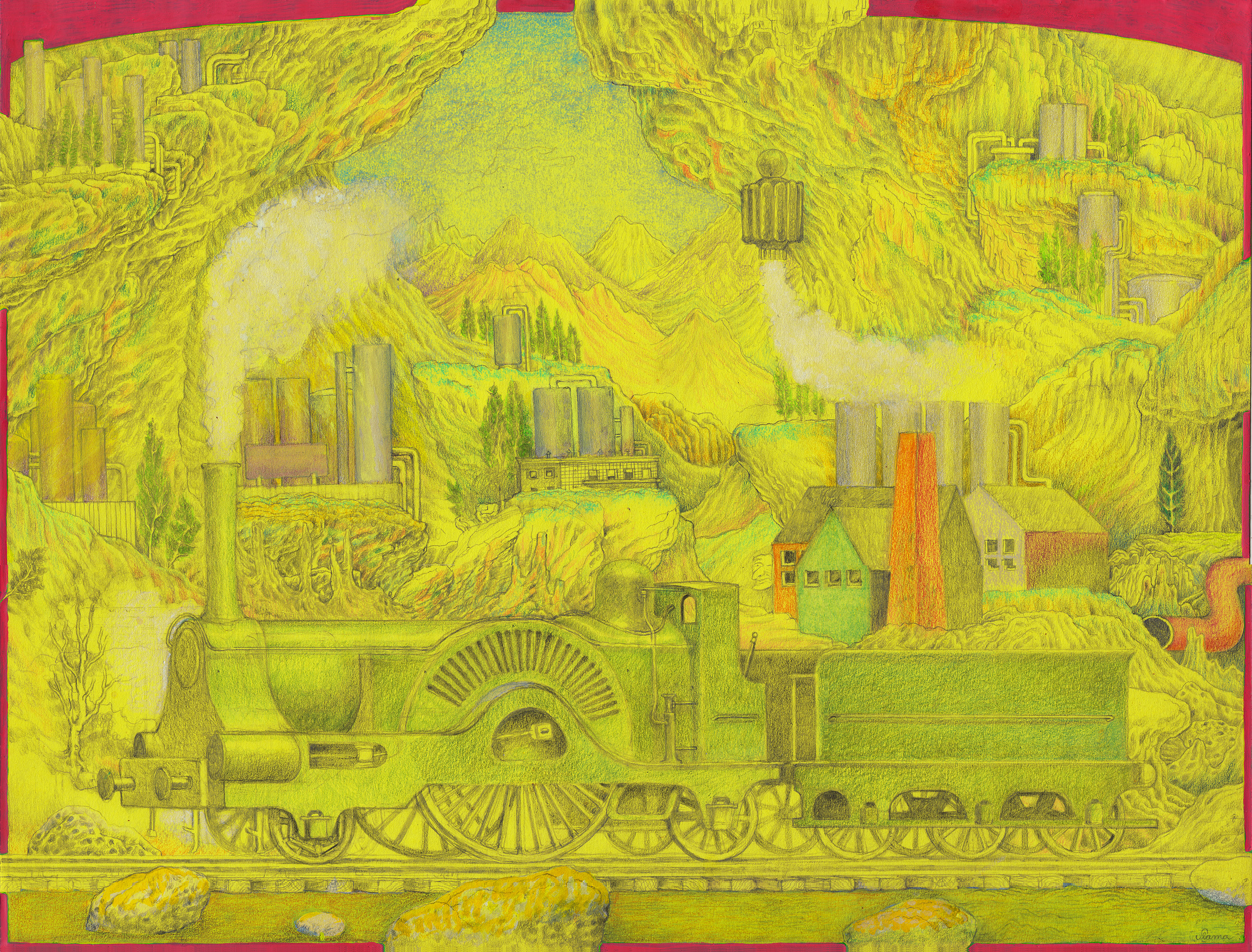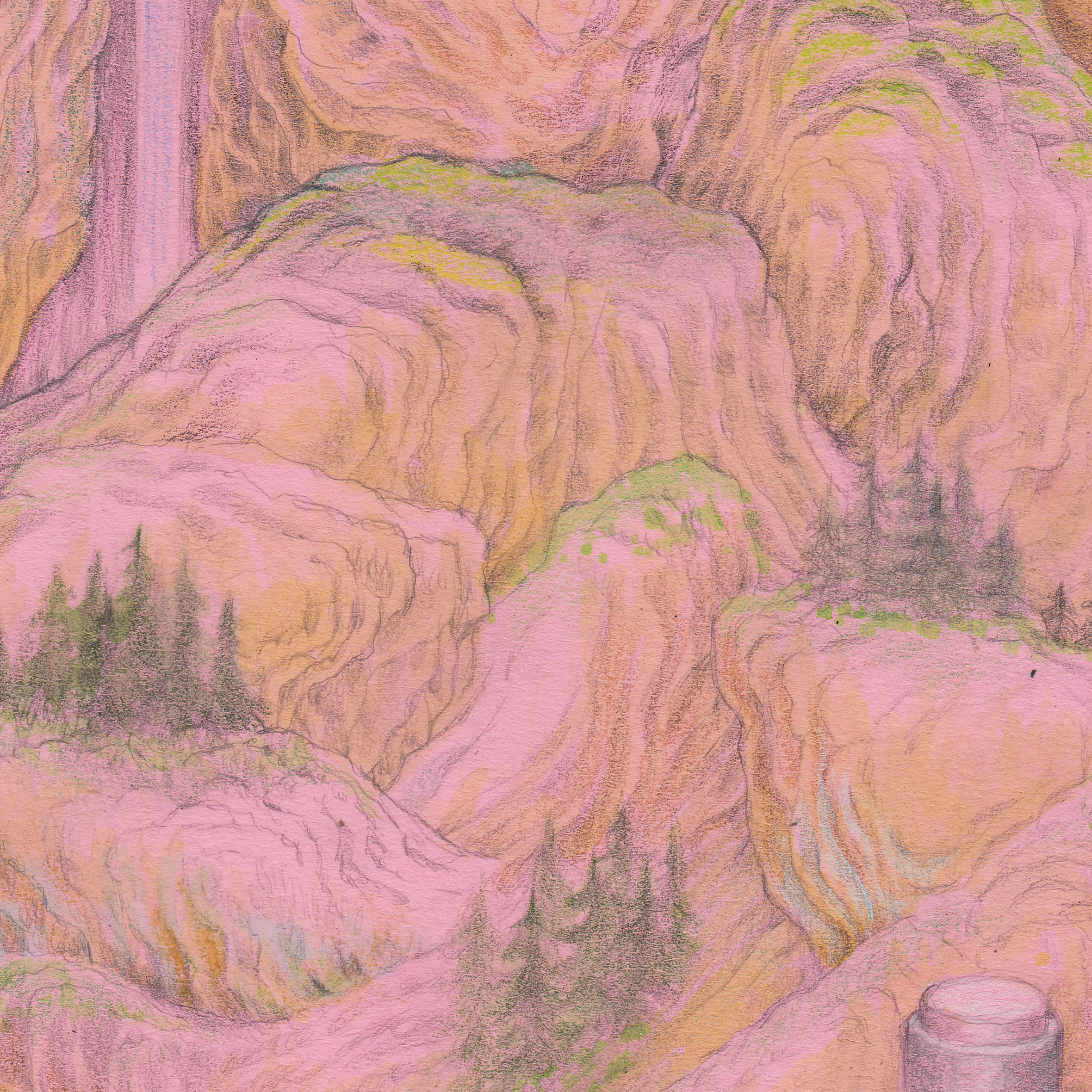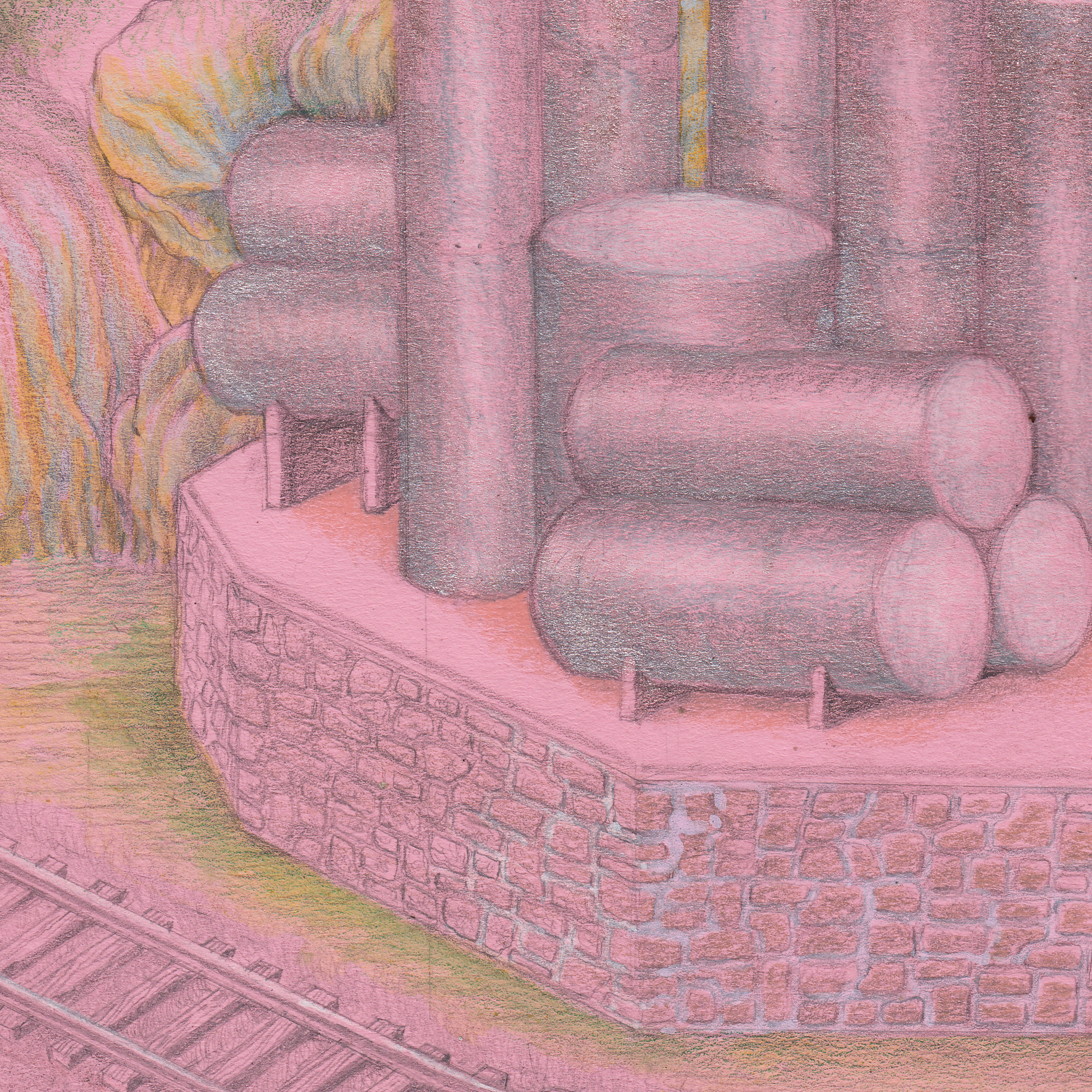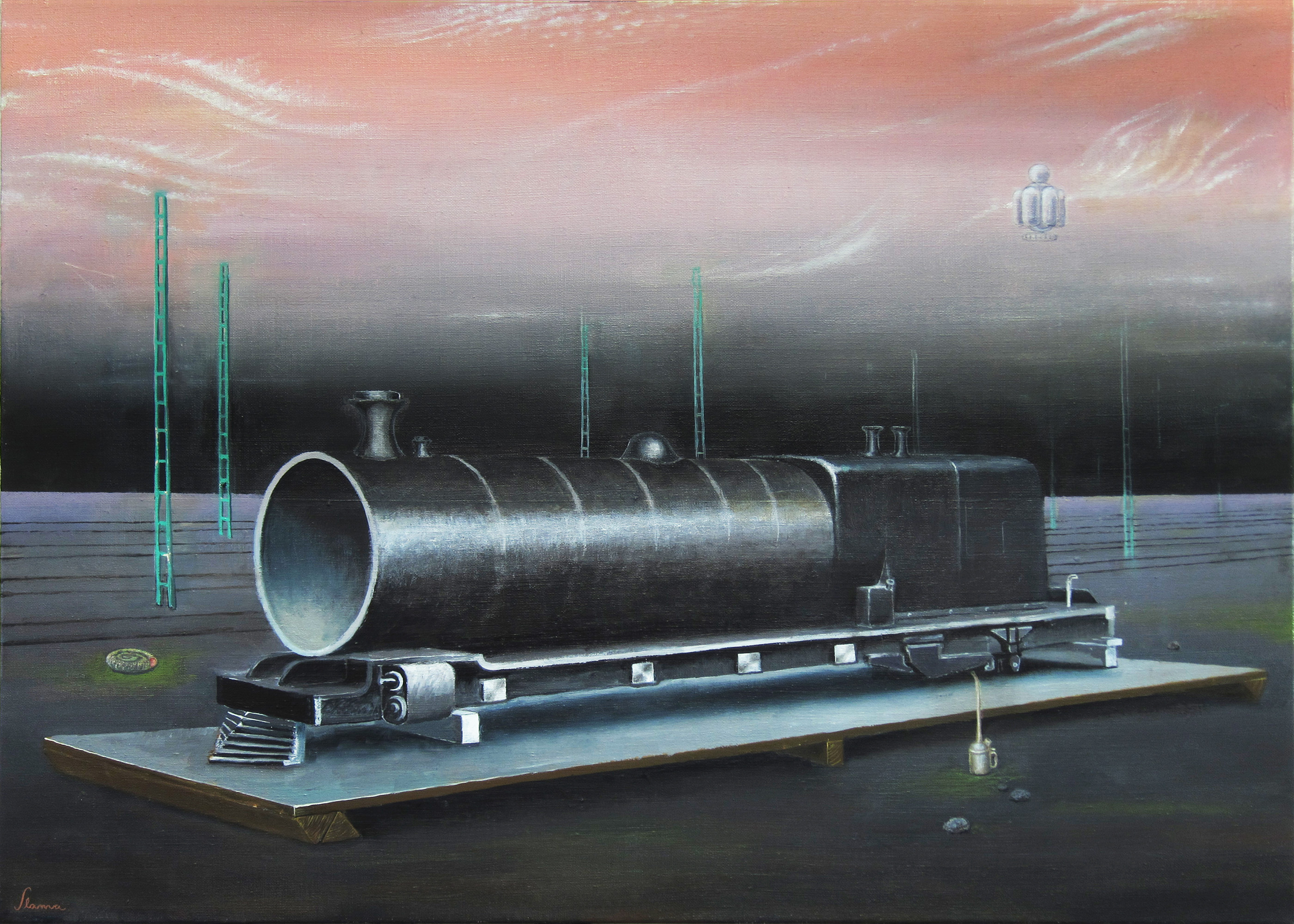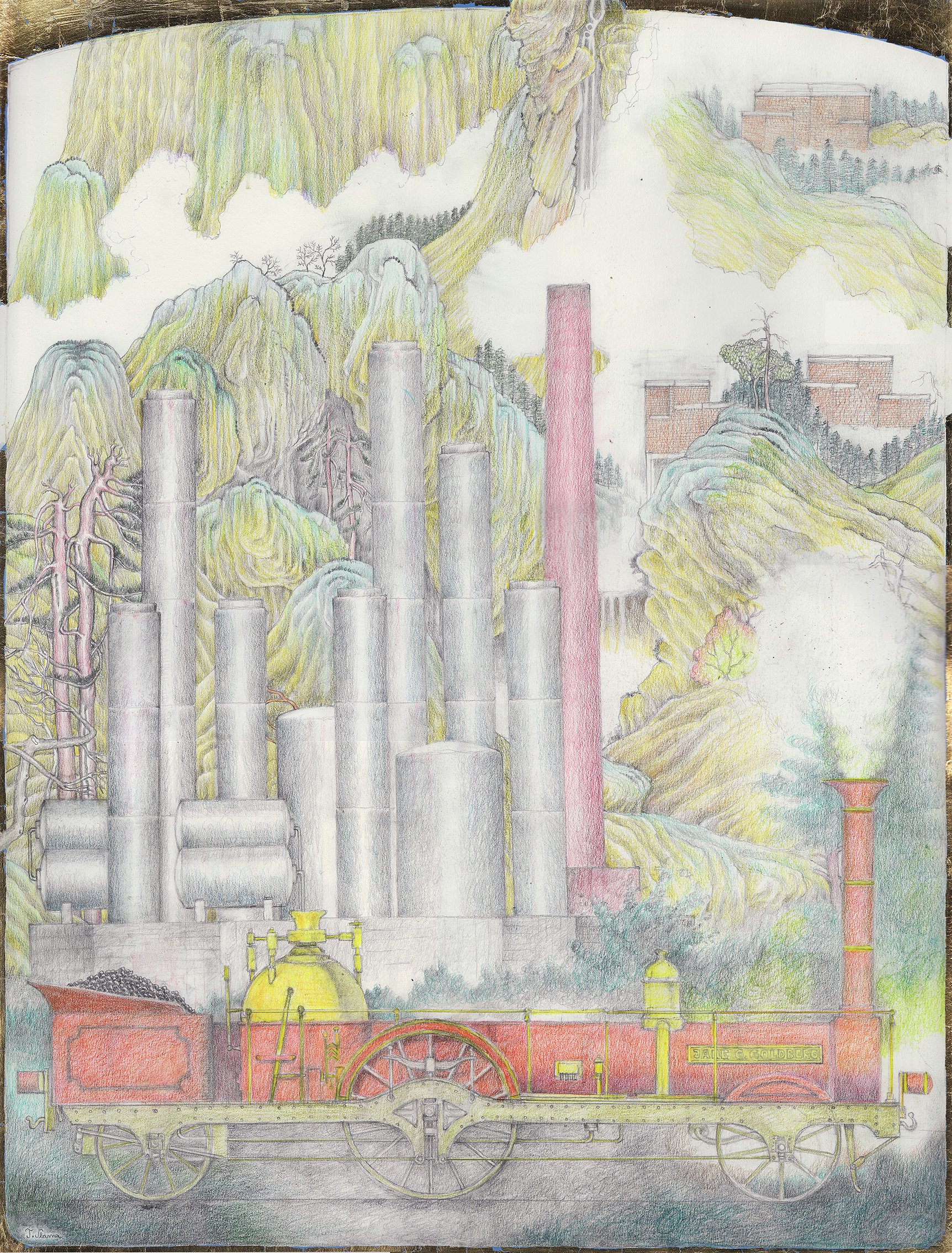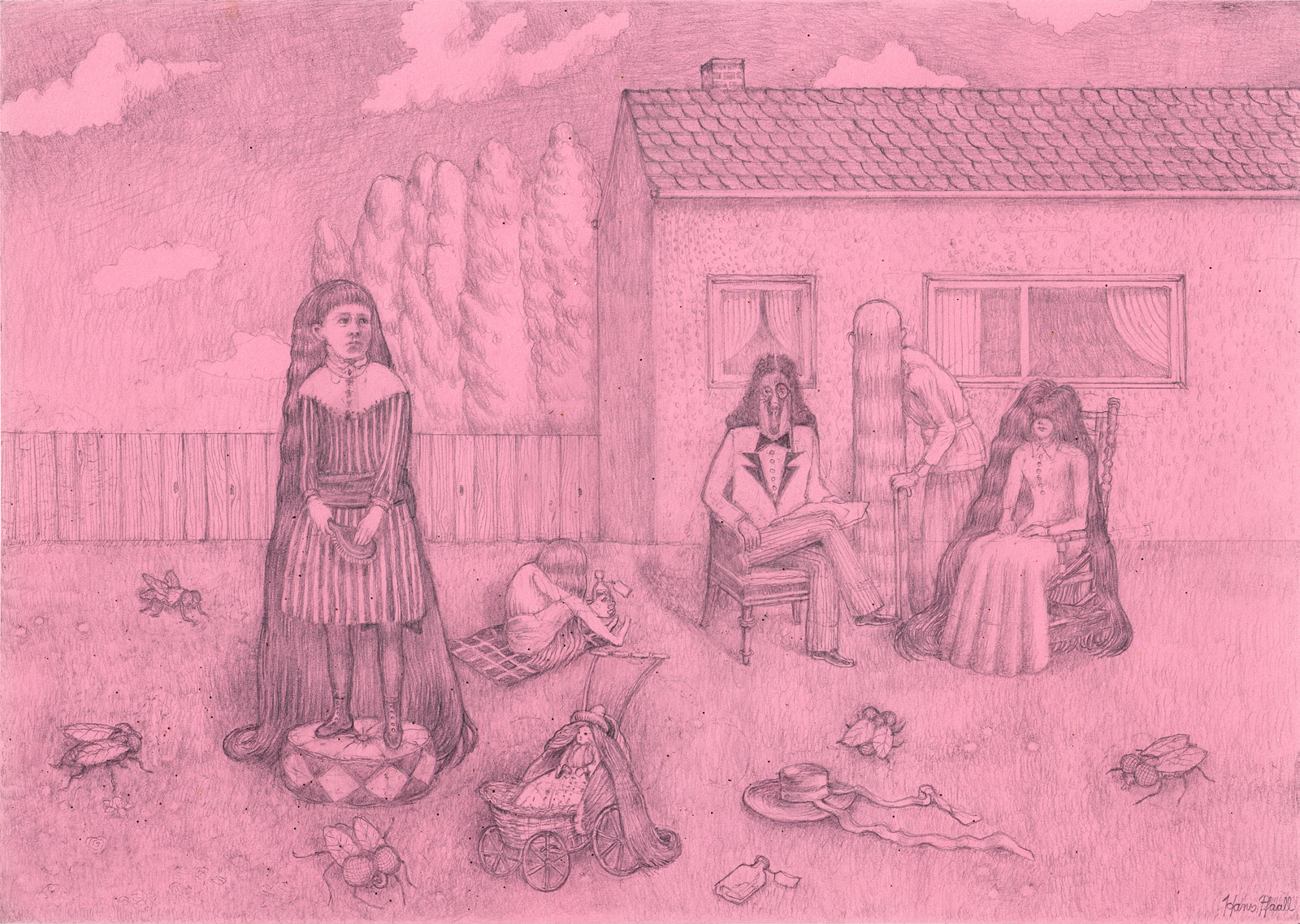
Das sehr wirkungsvolle Haarelixier (A4, 2015)
(What follows is perhaps somewhat rambling while striving to be an encompassing description of what is already there, yet undescribed, and maybe even better left alone and unmolested by words and hearsay-facts. Uncovered, named, listed, documented sources often form a thicket under which lies buried the depth of original conception, and the factual ambiguity of the term “original”. A term which to discuss is not the purpose of the following word-thicket.)
This drawing was made to serve as a decorative side-piece for a show in a special sort of gallery, showcasing original editions of books by Bruno Schulz. The drawing’s author (the “artist”), limited in his choices by the restrictions describing his own realm of inclinations, would not have chosen this author to draw inspiration from, yet found in himself a strong urge to do “something different” (something different, of course, from what he would naturally do). So it was an appealing idea to do something according to somebody else’s wishes. So it had to be a sort of illustration. It was not to be a paraphrase of Bruno Schulz’s own, often somewhat fetish-centric drawings. It is an illustration of a detail in the short story, “The Book”, an ad for a hair tonic mentioned therein. Some pictorial inspiration was drawn from one of this drawing’s author’s favourite oil paintings, “Mourning Picture”, by Edwin Romanzo Elmer. Since the drawing’s author does not get around too much, he has never seen that painting in the original. He first came across it in a book about “Naive Kunst”. For some reason, this painting was classified as that, among numerous Yugoslavian examples, some French, and a notable German entry, Friedrich Gerlach. It was only a black and white reproduction, not particularly crisp, but the cracks in the thickly-painted clouds were still intriguingly visible.
A nom de plume was chosen for this drawing which refers to Edgar Allan Poe. So the original accent is nicely rounded off by the American influence in the form of two late 19th century American sources augmenting or instrumentalizing one Polish-Jewish, 1937 modernist, original inspiration. What this means is that it tells you something about the drawing’s author’s mindset. The artist-illustrator would also maintain that there is a certain touch of Will Elder noticeable in certain details. Which then would make for a third, second half of the 20th century, modern-popular, as opposed to modernist, American influence. The above-mentioned pen name was “Hans Pfaall” (see signature in lower left corner), lending an additional phallic touch to the drawing, already well endowed with phallic forms (eight, or nine, depending on the viewer’s susceptibility to phallic forms). A touch of quaintness is the choice of pink tone-paper, in reminiscence to a certain cheap stock of recycled writing paper, not widely available anymore. The drawing originally also featured a cat (taken from the above-mentioned mourning-painting) with very long hair, which was then erased and replaced by a multitude of overgrown house flies (Musca domestica, of the suborder Cyclorrhapha). To complete the list of references, and, in the process, to add one German influence (an addition of questionable historical and moral sensitivity perhaps), the self portrait of the painter of the Mourning Picture, sitting in a lawn chair and reading a newspaper, originally moustached, wearing a bowler hat, had his head replaced with that of a dog-creature which is a rather faithful copy of a drawing by the German author Wolfdietrich Schnurre, who illustrated his own books. This dog face, bearing the caption “Arrogant, aber von Adel”, was featured in his 1965 novel “Die Aufzeichnungen des Pudels Ali”.
The drawing was never used for its intended purpose, it was not shown, for it was too attention-drawing. So it was sent back to the draftsperson (the drawing’s author). Drawing and explanatory note © 2021 by Torsten Slama and the International Balloonist’s Society for the Applied Arts


